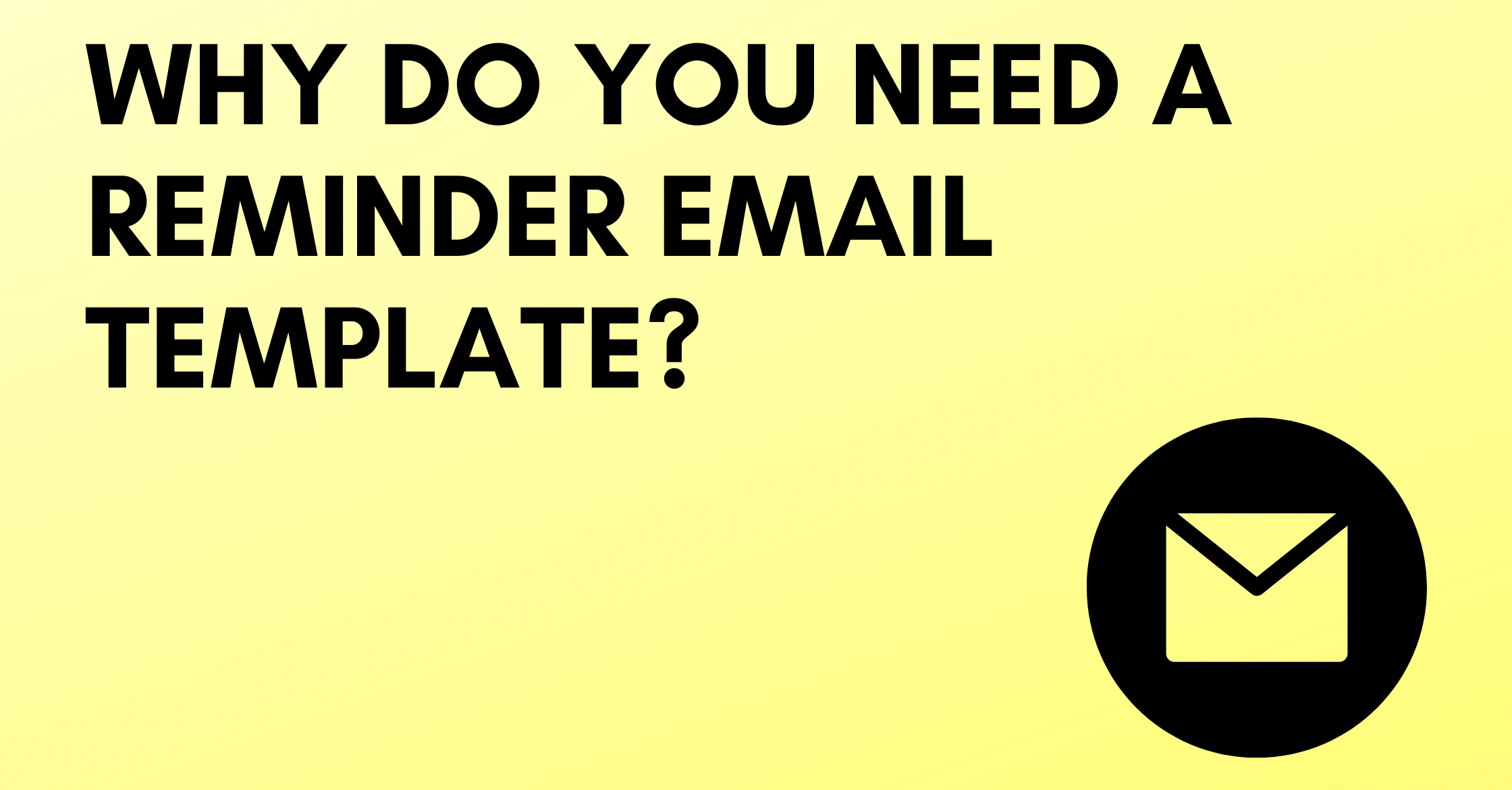
Want to send points to someone but don’t know how? A gentle reminder email might be just what you’ve been looking for. Done right; it can be a polite, persuasive, and professional way to get your point across effectively. Composing the perfect reminder email template can be very difficult.
But it doesn’t have to be that way all the time. Following our tips and tricks, you can send the perfect soft reminder in minutes. This article explains what reminder emails are when they should be sent, and in what format.
Reminder emails are a great way to get in touch with someone about your next appointment, deadline, or meeting follow-up. Polite reminder emails are often crafted but can be cumbersome when done effectively.
Getting the right tone, the right words, the right number, and the right time on the air takes a little ingenuity. If your notes are too blunt or fire too quickly, you risk being seen as disrespectful. If you’re too passive, your email (and the requests it contains) may be overlooked or simply ignored.
Additionally, we’ll see how to send reminder emails in different situations and templates.
What is a Remainder Email?
There are many reasons why you often need to send gentle reminders via email. Whether it’s reviewing interviews, attending meetings, or highlighting later work. There are typically two types of email reminders:
1. Emails sent before something happens – for example, an upcoming meeting or appointment.
2. Email reminders sent after something has gone wrong – for
example, if a bill is not paid on time or work is delayed. The main purpose of reminder emails is to persuade someone to take action.
When must a Reminder Email be sent?
As we’ve seen, reminder emails are extremely useful when something important is coming your way. In addition, it is also necessary when something should have happened, but it did not.
Here are some situations where sending reminders can be beneficial:
1. Late payment: Making payments on time is common business etiquette. Circumstances may arise, but you are still entitled to the fees you owe. Don’t feel guilty about sending reminders
when the deadline has passed and you haven’t received the promised funds.
2. Missed work deadline: There are no lone workers in today’s business world. If one employee fails to complete a task within the promised time, the entire project can be delayed. With that in mind, it’s a good idea to send her a reminder email before the time is up.
3. Upcoming Important Events: Certain events and deadlines are too important to miss. So you can send gentle reminder emails ahead of time to ensure everyone is on track.
4. Issues with Vendors: Sometimes, the seller may forget to send you an invoice when you have to pay. Or maybe the item you ordered hasn’t arrived yet. Your business may depend on these invoices and products. So it’s perfectly fine to get in touch with the person in question and get in touch with them.
5. Future Interviews or Applications: If you’re actively applying for a job, sending a follow-up email increases your chances of success. But be mindful not to send too many messages to recruiters. But a well-timed email can help you stand out.
6. Failure to communicate: There have been many situations where someone promised to do
something and get back to you, but didn’t. Reminder emails help you get back in touch. In addition, you can find out if the task happened to them or if there is something you can do.
Elements of a reminder email
One of the most important factors, besides actually sending the email, is maintaining a
friendly tone. Ideally, you should find a balance between understanding and urgency. Simply put, the calmer you behave, the better.
Once you’ve set your intent and made sure it aligns with your goals, it’s time actually to compose your email. We’ve already discussed some situations where sending reminder emails is appropriate. Now let’s try to understand the actual reminder email format.
- Step 1 – Choose an Appropriate Subject Line: The importance of a catchy subject line cannot be overemphasized. Remember that this will be the first thing your recipient will see.
You absolutely have to count it! You can use different power phrases to draw attention based on the action you take.
For example, phrases like “requires action” or “requires action”. Include enough relevant information so your contact can understand what your reminder is about. Keep your subject short, concise, and to the point.
- Step 2 – Greeting the Recipient: Similar to the subject line, a greeting is mandatory when sending reminder emails. It makes your message sound professional and at the same time approachable. If you don’t know the person or just want to keep things formal, you can use the default “Dear”. You can also use “Mr” and”Mrs”.in other formal messages. If you want a more casual tone, opt for a friendly hello or hello.
- Step 3 – Write your content/text. Once you’ve crafted a good salutation, it’s time to get down to the nitty-gritty of your email. You can easily split the reminder message text into two different parts.
1. Explanation of the reminder email- After the greeting, be brief and polite. Whatever event or topic you want to be It should be described in a few short, clear sentences.
2. Call to Action (CTA) – Once you’ve articulated the main reason for your email, add a CTA. A CTA button or link makes it easier for your contacts to respond quickly. Remember, a call to action is enough to get your point across. The customer’s close attention is required to allow the customer to proceed with the above actions.
- Step 4 – Pack and add the finishing touches. Always remember to end the email by asking the recipient if in doubt.
A good closing sentence is, “I look forward to hearing from you.” or “Thank you for prioritizing this matter.” Additionally, providing relevant content can be a great way to show that you care about your user base. For example, send a friendly reminder email when an offer is about to end. This helps you upsell by showcasing specific flagship products. The last thing that you have to do is sign the email. Appropriate signs include “nice to meet you”, “nice to meet you”, “nice to meet you”, and “nice to meet you”.
Refer to this link for a Reminder Email Template


